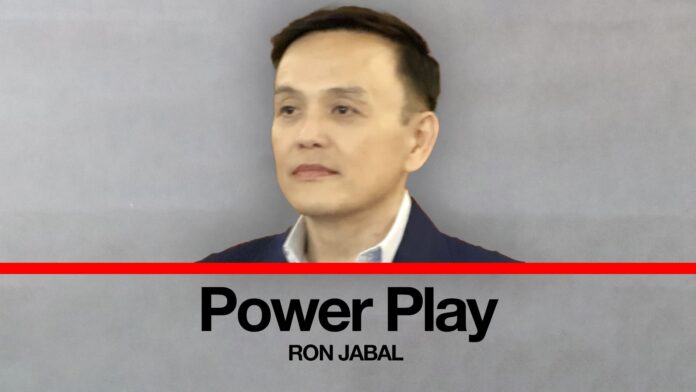The public rift between President Ferdinand “Bongbong” Marcos Jr. and Vice President Sara Duterte has become one of the most defining, and destabilizing political storylines in recent Philippine history. The media has played a significant role in shaping public perception of this conflict, using several framing devices to articulate its implications on governance, political alliances, and citizen trust.
Media Frames in Play
1. Conflict and Dysfunction Frame
News coverage often underscores the feud as a sign of internal dysfunction within the highest levels of government. The tension, highlighted by Duterte’s pointed criticisms and Marcos’ retaliatory moves such as budget cuts and investigations, has painted a picture of a fractured executive leadership, preoccupied with internal rivalries rather than national priorities.
2. Dynastic Rivalry Frame
At the heart of the narrative lies the battle between two dominant political clans. The conflict is framed as a high-stakes power struggle between the Marcos and Duterte families each vying for influence ahead of the 2025 midterm elections and the 2028 presidential race. This framing positions the feud as more than personal; it’s dynastic and deeply political.
3. Leadership and Governance Frame
Media narratives have also turned the spotlight on leadership capabilities. Duterte’s verbal jabs at Marcos’ perceived lack of decisiveness are being interpreted as challenges to his authority and effectiveness. For Marcos, maintaining a composed response while strategically undermining the VP raises questions about his leadership style and tolerance for dissent.
4. Campaign and Election Frame
Many reports suggest the conflict is pre-election maneuvering in full swing. Both camps are seen as laying the groundwork for their 2025 slates and 2028 ambitions, making political posturing seem more urgent than national governance. This lens contributes to the perception that public service is taking a backseat to political ambition.
5. Accountability Frame
Investigations into the vice president’s confidential funds and education-related spending have been framed both as legitimate probes and as political retaliation. Some narratives suggest Duterte deflects criticism by attacking Marcos, while others critique the president for weaponizing accountability mechanisms.
6. Public Sentiment and Trust Frame
Finally, media outlets often link the feud to a broader decline in public trust. With approval ratings fluctuating and public frustration mounting, this frame captures how political infighting deepens citizen disillusionment and undermines confidence in both leaders.
How These Frames Influence the Public
1. Erosion of Trust in Leadership
By emphasizing dysfunction and infighting, media frames can reinforce the idea that national leaders are more focused on personal vendettas than public welfare. This leads to diminished trust in institutions and growing political apathy.
2. Rising Political Polarization
Dynastic rivalry and election framing tend to deepen divisions among the public. Supporters of each camp are pulled further into personality-based partisanship, often at the expense of meaningful policy debates.
3. Growing Cynicism Toward Political Dynasties
The focus on family power struggles highlights the entrenched nature of dynastic politics. As a result, more Filipinos are becoming disillusioned with the repetitive cycle of elite dominance and unfulfilled reform promises.
4. Pre-Election Instability
As political camps mobilize for electoral advantage, the perception of instability increases. This could lead to voter confusion, reduced turnout, or support for non-traditional candidates who campaign on reformist platforms.
5. Public Pressure for Governance
Frames that center on dysfunction and lack of accountability heighten public demand for effective governance. As major issues like inflation, healthcare, and education remain unresolved, public impatience grows.
6. Opening for Independent Movements
Disillusionment with traditional power blocs creates space for independent, reform-oriented political movements—especially among younger voters hungry for issue-based leadership and authentic representation.
Alternative Frames to Enrich Public Understanding
To move beyond sensationalism and deepen civic discourse, the media can consider reframing the Marcos-Duterte conflict through alternative lenses:
1. Policy Impact Frame
Shift focus to how the feud affects actual governance i.e. budget execution, project delivery, and inter-agency coordination. How do personal rifts impede service delivery?
2. Citizen-Centric Frame
Move the spotlight from elite drama to everyday Filipinos. How are citizens coping with political instability, and what do they expect from their leaders amid crises?
3. Reform Opportunity Frame
Use the conflict to catalyze discussions on structural reforms, including campaign finance transparency, stronger checks and balances, and anti-dynasty legislation.
4. Historical Parallel Frame
Contextualize the feud in a broader historical tradition of elite rivalries in Philippine politics, offering lessons from past cycles of division and consolidation.
5. Crisis of Leadership Frame
Reflect on how the feud reveals weaknesses in the country’s leadership culture. What does this say about coalition governance, political maturity, and the expectations placed on top officials?
6. Youth and Future Frame
Examine how political drama affects youth engagement. Are today’s political dynamics alienating or awakening a new generation of voters and activists?
7. Regional and International Implications Frame
Explore how the rift shapes foreign perceptions of the Philippines. Could internal instability weaken our regional standing or undermine global partnerships?
Framing Matters.
The way media tells the story of the Marcos-Duterte rift influences not only public opinion but also the political trajectory of the country. By shifting from personality-driven drama to deeper, more citizen-focused analyses, we can create space for accountability, clarity, and ultimately, a more informed democratic conversation.





